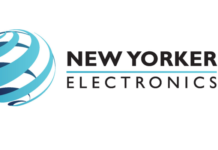The recent announcement regarding adjustment of BCD to 10% on parts of mobile phones and mechanics, die-cut parts and 0% on inputs of mechanics along with other inputs for mobile phones classified as ‘Others’ under HSN code 85177990 has been adjusted to 10%, symbolises the start of a paradigm shift in the approach in policy formulation of the government towards export-led growth and competitiveness.”
“This is a critical and welcome policy intervention by the Government towards making mobile manufacturing competitive, build scale and ride on low input tariffs, this will be the key to transform India into a global hub for Electronics Manufacturing and Exports”. This will also help GVCs to source their inputs from Indian companies and setting up their manufacturing facilities in India. We as a nation should further address tariff rationalisation to build competitiveness in the international market. This is vital to unlock our potential in global electronics manufacturing and trade and integrating India to GVCs.” Said Mr. Pankaj Mohindroo, Chairman, ICEA.
In the original PMP architecture the import duty on “Others” under HS code 85177990 was never intended to be at 15%, it was raised from 5% to 15% in 2018 without any industry consultations. Similarly, import duty on mechanics and its inputs was never mentioned in the PMP architecture, the removal of duty on inputs for mechanics is appreciated as it is only a realignment with the original PMP framework.
The duty rationalisation at 10% for “Others” under HS code 85177990 will reduce the possibilities of misinterpretation by custom formation and subsequent litigations during the import of mobile phone inputs. The recent announcement should be perceived as a resolution of unwarranted imposition of duties, compliances leading to serious interpretation issues rather than a reduction of duties and is a mere correction back to the originally planned PMP.
ICEA rigorously followed for this for last 5 years with all relevant government agencies such as MeitY, Min. of Commerce, Min. of Finance and PMO. This took a lot of relentless efforts we made an in-depth study to justify industry demands, said Mr. Mohindroo.”
The report titled “A Comparative Study of Import Tariffs impacting India’s competitiveness in Mobile Manufacturing & Exports” was made by ICEA and presented to all relevant authorities. The study delved into detailed research on comparative import tariffs on inputs used for the manufacture of mobile phones, this study on 65 tariff lines across 7 competing nations. Said Mr. Mohindroo.”
The findings of this study suggests that India has the highest tariffs on mobile phone inputs. The Study shows that India’s simple average MFN tariff on inputs is 8.5% which is higher than China’s 3.7%. The high tariffs on inputs increases the cost of domestically manufactured finished goods making them uncompetitive in the international market. This discourages GVCs while sourcing their products from India and setting up their giant manufacturing units here.
Vietnam is a prominent manufacturing nation of electronic items and sources almost 80% of its inputs are from FTA countries. The study highlights that the FTA weighted average tariff comparison between India and Vietnam 6.8% and 0.7% respectively.
Further, the maximum tariff lines for both China and Vietnam are at 10% import duty whereas, India has higher tariff lines and tariff slabs for the same set of inputs (see Table 2). Almost all (97%) of Vietnam’s weighted average tariff lines are between zero to 5% and 60% of China’s tariff lines are in this range.
Higher import tariffs in India impact costs by 6-7%, compared to Vietnam and China: The Study shows that higher tariffs in India results in an overall loss of competitiveness by approx. 6% to 7% compared to Vietnam and China. This also indicates that the price rise due to India’s high import tariffs on inputs makes even domestically manufactured goods to be costlier contrary to policy objectives of building a local ecosystem and increasing domestic value addition.
What does today’s notification reducing tariffs on inputs for mobile manufacturing signify?
- Reduction in cost of domestically manufactured goods and possibilities of misinterpretations during imports of inputs:The reduction of certain tariff lines and rationalisation of duty in the ‘Others’ category will help increase India’s cost competitiveness and reduce scope for misinterpretations by custom formations and following legal proceedings, a key EoDB issue resolution.
- Building Value Addition is linked to scale, not tariffs: Establishes that Domestic Value Addition is a function of scale. Scale, in turn, can only come from exports in the electronics sector. Once India achieves scale, manufacturing of components and sub-assemblies will shift in large numbers to India which, in turn, increases Domestic Value Addition.
- Mobile sector transforming from import substitution to exports: From 78% import dependency in 2014-15, 99.2% of all mobile phones sold in India are now made in India. Domestic market constitutes $33 billion at the end of FY’23 and exports ($11.1 billion) now constitute 25% of the total production India’s market for mobile phones is changing. We need to gear up to build production and add large number of jobs by exporting to the world.
- Incentives help competitiveness, not tariffs: Recognition that incentives – and not high tariffs on inputs – help build competitiveness or scale in a sector that is transforming from import substitution to export-led growth.
- Consistent with global experience and India’s policy objectives: No country in the world has succeeded in enhancing trade and exports with high input tariffs. High input tariffs goes against India’s stated ambitions of reaching $2 trillion exports – a large part of which will come from electronics and mobile exports.
- Electronics can become top 3 exports from India in 2 years: Electronics has improved from the 9th position few years ago to India’s 5th largest export in 2024. Can reach Top 3 by 2026. Mobiles constitute over 52% of electronics exports, thanks to the PLI Scheme. This is the first industry to leapfrog out of import substitution to export-led growth within the last 8 years. Government has been an excellent and willing partner in this transformation.
TABLES (from report)
Table 1: Comparison of India’s MFN and FTA tariffs with China and Vietnam
| India Vs China | India Vs Vietnam |
| Simple Avg MFN Tariff | Simple Avg FTA Weighted Avg Tariff |
| INDIA | 8.5 | INDIA | 6.8 |
| CHINA | 3.7 (MFN Tariff) / 0% (Effective Tariff in bonded zone) | VIETNAM | 0.7 |
Table 2: Comparison of tariffs across 65 tariff lines in India, China and Vietnam
| MFN Tariff Distribution (India & China) | ||||||
| COUNTRIES | Zero | 0+ to 5% | 5+ to 10% | 10+ to 15% | 15+ to 20% | 20+ to 25% |
| INDIA | 15 | 9 | 6 | 21 | 11 | 3 |
| CHINA *China has 2 HSN codes with different MFN tariffs, hence 67 tariff lines considered | 36 | 3 | 28 | No components or sub-assemblies above 10% tariffs | ||
| Distribution of FTA Weighted Average Tariffs (India & Vietnam) | ||||||
| COUNTRIES | Zero | 0+ to 5% | 5+ to 10% | 10+ to 15% | 15+ to 20% | 20+ to 25% |
| INDIA | 15 | 12 | 17 | 15 | 5 | 1 |
| VIETNAM | 39 | 24 | 2 | No components or sub-assemblies above 10% tariffs | ||
Annexure 1:
Recent duty announcements on mobile phone inputs/parts:
| S. No | Description | 2023-24 (Old) | 2024-25 (New) |
| Inputs of Mobile Phones | Basic Customs Duty (%) | ||
| 1 | Mechanics: Battery cover, Front cover, Middle cover, Main lens, Back cover, GSM Antenna/Antenna of any technology, PU case/Sealing Gasket – Other articles of Polyurethane foam, SIM socket, Screw, Other mechanical items of plastic & Metal, Side Key | 15 | 10 |
| 2 | Parts of Mechanics and Die Cut Parts (Resin, Mesh, Adhesive, Sponge, Film, Gasket, Logo, Steel Sheet, Cover Tape, Adhesive Tape, etc) | 7.5 -15 | 0 |
| 3 | Die Cut Parts: Conductive cloth, LCD conductive foam, LCD foam, BT foam, Heat dissipation sticker battery cover, Sticker-Battery slot, Protective film for main lens, Mylar for LCD FPC, Film-front flash | 15 | 10 |
| 4 | All Inputs for Mobile Phones classified under HS Code 85177990 as “Others” | 15 | 10 |















